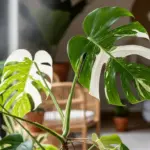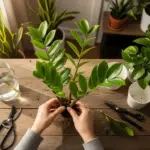2. Light Requirements That Actually Make Sense for Real Homes

I spent two years wondering why my snake plants looked so sad and stunted. They were alive, sure, but they weren’t thriving like the gorgeous ones I saw on Instagram.
Turns out I’d been buying into the biggest plant myth ever. “Low light plants” doesn’t mean what you think it means.
The Low Light Lie That’s Stunting Your Growth
Here’s the truth bomb that changed everything for me: snake plants don’t actually prefer low light. They just tolerate it better than most plants.
There’s a huge difference between surviving and thriving. My plants were basically in survival mode for years because I stuck them in the darkest corner of my living room.
Bright, indirect light is what these beauties really want. Think of their natural habitat – they’re getting filtered sunlight through other plants, not sitting in a cave.
The moment I moved mine closer to windows, the growth difference was incredible. New shoots, thicker leaves, that gorgeous deep green color I’d been missing.
Assessing Your Home’s Real Light Situation
Most of us are terrible at judging natural light levels in our homes. I thought my apartment was “bright” until I actually paid attention to where the shadows fell.
Here’s my simple test: hold your hand about 12 inches above a white piece of paper in different spots. If you can see a clear shadow, that’s bright light. Fuzzy shadow? Medium light.
No shadow at all means low light – and that’s probably too dark for optimal snake plant growth.
North-facing windows get the worst rap, but they actually provide consistent, gentle light all day. It’s not intense, but it’s steady – which snake plants appreciate.
South-facing windows can be too intense without some filtering. I learned this the hard way when my plant got sunburned leaves – yes, that’s a real thing.
Creative Solutions for Challenging Spaces
My first apartment had exactly one decent window, and it faced a brick wall. Talk about a lighting nightmare for a plant lover.
Mirrors became my secret weapon. I placed a large mirror opposite my window, and suddenly that corner got twice as much reflected light.
Light-colored walls and furniture make a massive difference too. When I painted my dark accent wall white, the whole room felt brighter – and my plants noticed.
For dark corners, I got creative with placement. Instead of forcing plants to live there, I rotate them. Two weeks in the bright spot, one week in the darker area.
Metallic planters and light-colored ceramic pots reflect more light than dark ones. It’s a small change that adds up over time.
Stylish Grow Light Solutions That Don’t Scream “Grow Light”
I was so resistant to grow lights because I thought they’d make my apartment look like a marijuana operation. Boy, was I wrong about modern options.
LED strip lights under floating shelves work amazingly well. They look like accent lighting but give your plants exactly what they need.
Full spectrum bulbs in regular table lamps are my favorite hack. Nobody knows it’s a grow light – it just looks like stylish ambient lighting.
I use a clip-on grow light that looks like a modern desk lamp. It’s adjustable, doesn’t take up floor space, and actually improves the room’s aesthetic.
The key is 12-16 hours of artificial light if you’re supplementing. I have mine on a timer so I don’t have to remember – because let’s be honest, I’d forget.
Think you’ve got the lighting figured out? Wait until you hear about the soil mistake that’s sabotaging everything else you’re doing right. The “regular potting soil” trap has killed more snake plants than pests and diseases combined. Click next to discover the soil secret that changes everything! 🌱









GIPHY App Key not set. Please check settings